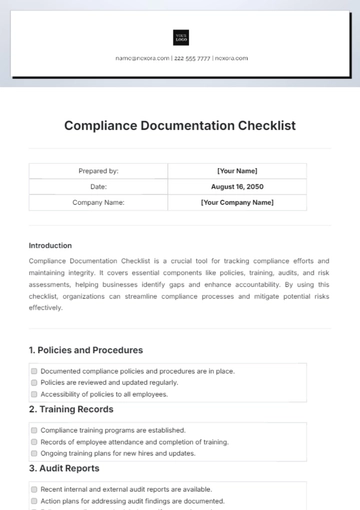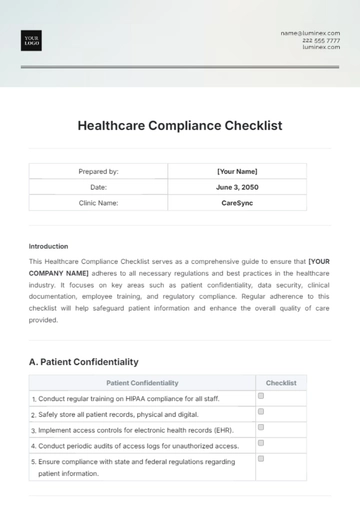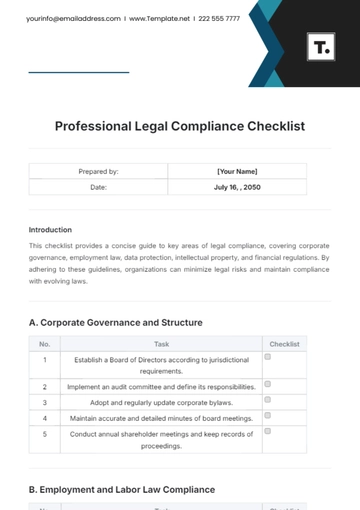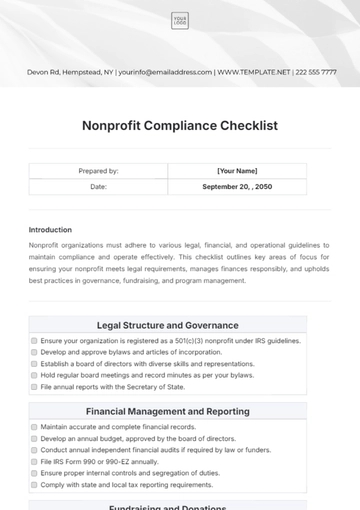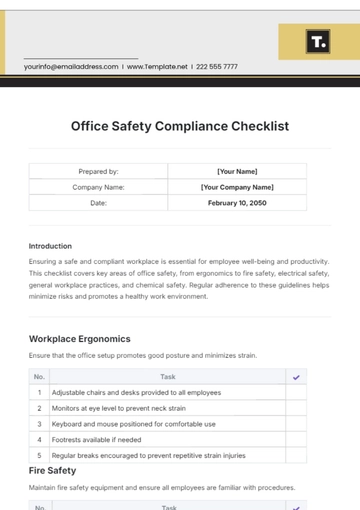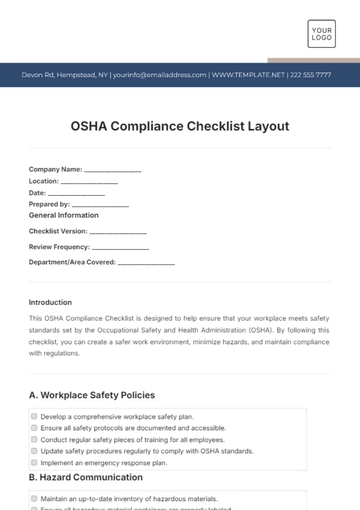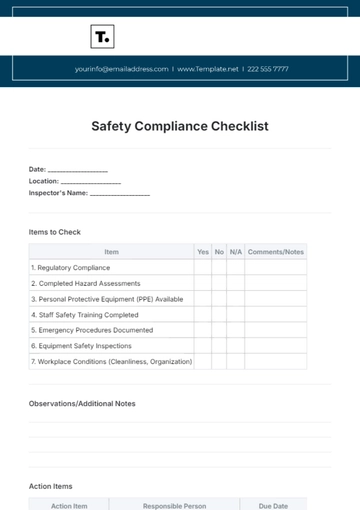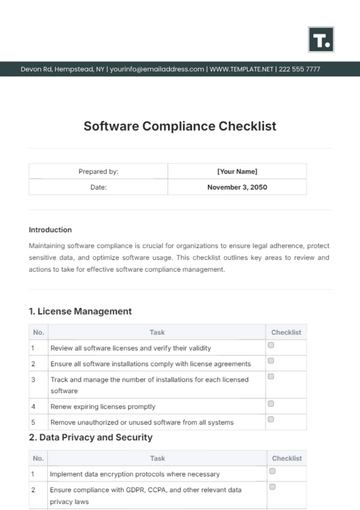Free Professional Website Compliance Checklist
Ensure your website meets all compliance standards with the Professional Website Compliance Checklist Template from Template.net. This fully editable and customizable template allows you to tailor the checklist to your specific needs. Easily modify it using our AI Editor Tool to streamline your compliance process and enhance your website's professionalism. Start today for peace of mind!




